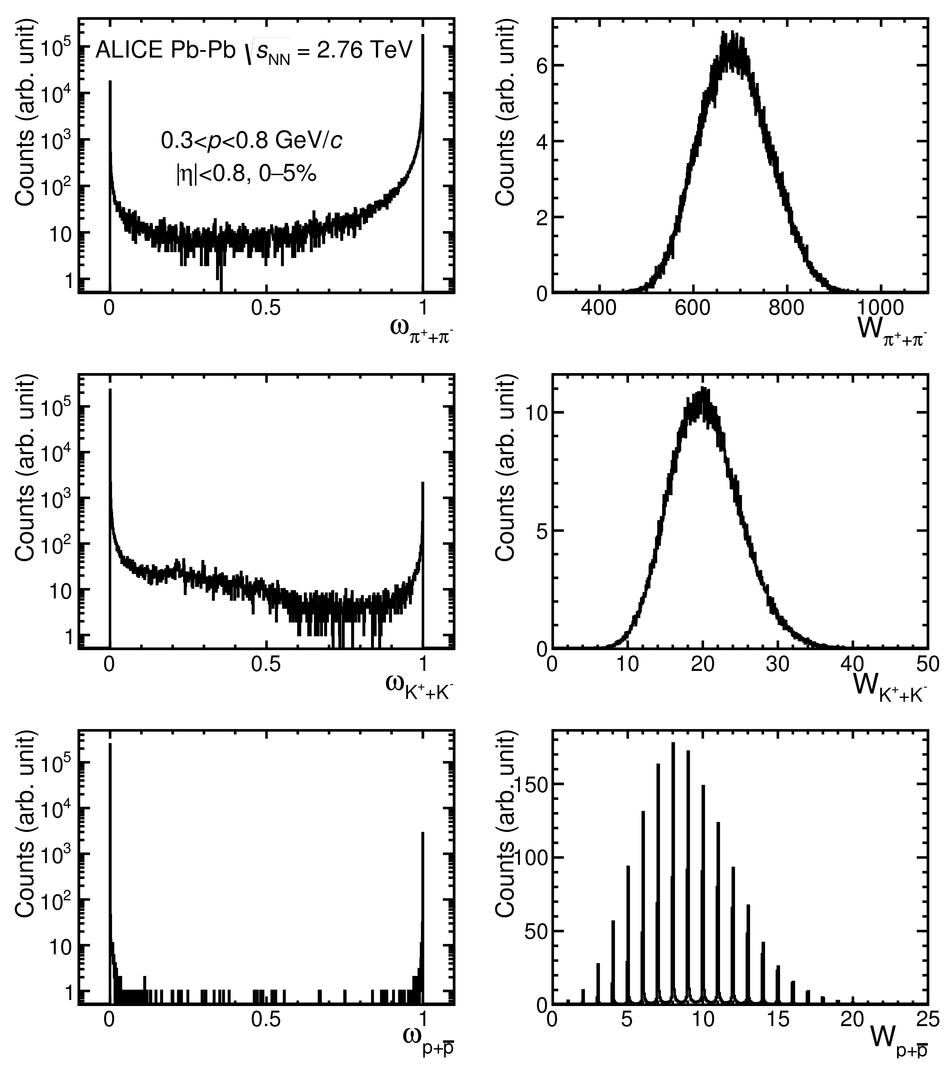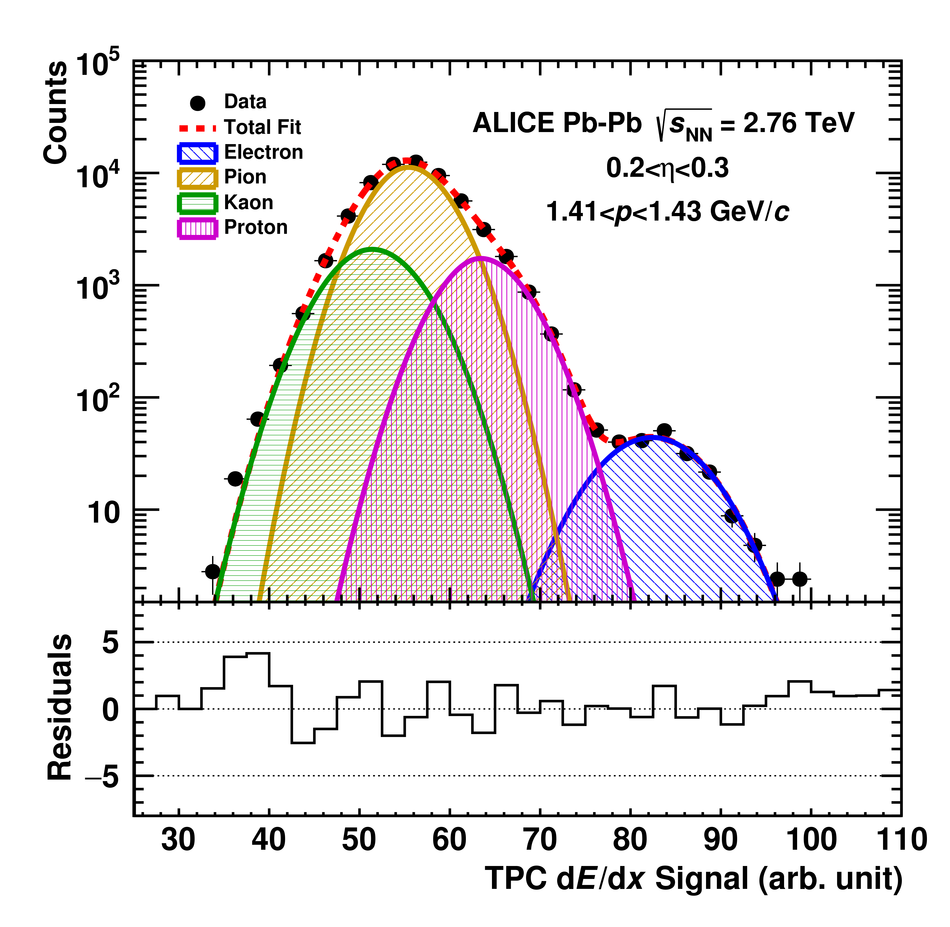First results on K/$\pi$, p/$\pi$ and K/p fluctuations are obtained with the ALICE detector at the CERN LHC as a function of centrality in Pb-Pb collisions at $\sqrt{s_{\rm NN}}=2.76$ TeV. The observable $\nu_{\rm dyn}$, which is defined in terms of the moments of particle multiplicity distributions, is used to quantify the magnitude of dynamical fluctuations of relative particle yields and also provides insight into the correlation between particle pairs. This study is based on a novel experimental technique, called the Identity Method, which allows one to measure the moments of multiplicity distributions in case of incomplete particle identification. The results for p/$\pi$ show a change of sign in $\nu_{\rm dyn}$ from positive to negative towards more peripheral collisions. For central collisions, the results follow the smooth trend of the data at lower energies and $\nu_{\rm dyn}$ exhibits a change in sign for p/$\pi$ and K/p.
Eur. Phys. J. C (2019) 79: 236
HEP Data
e-Print: arXiv:1712.07929 | PDF | inSPIRE
CERN-EP-2017-318




